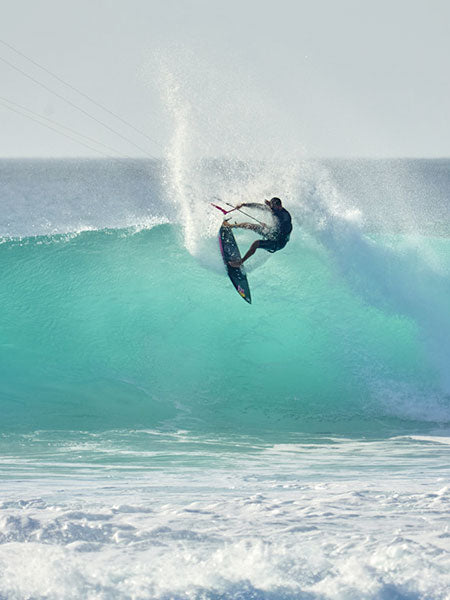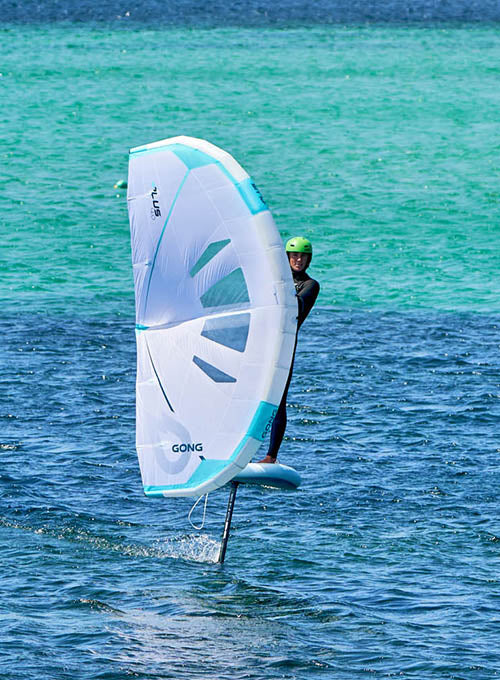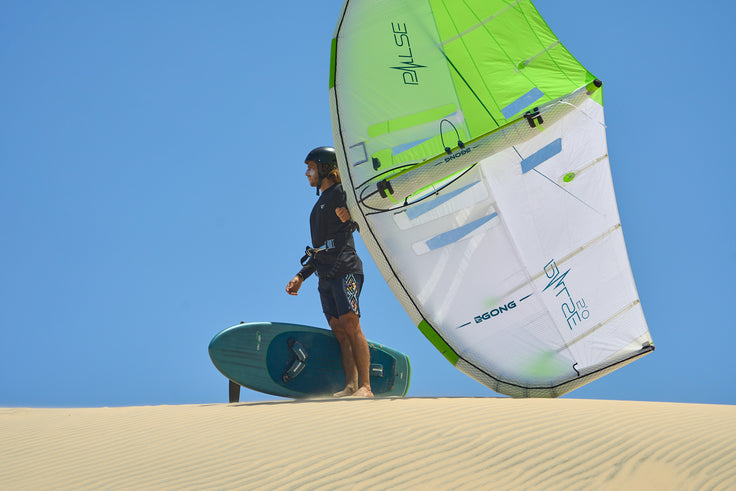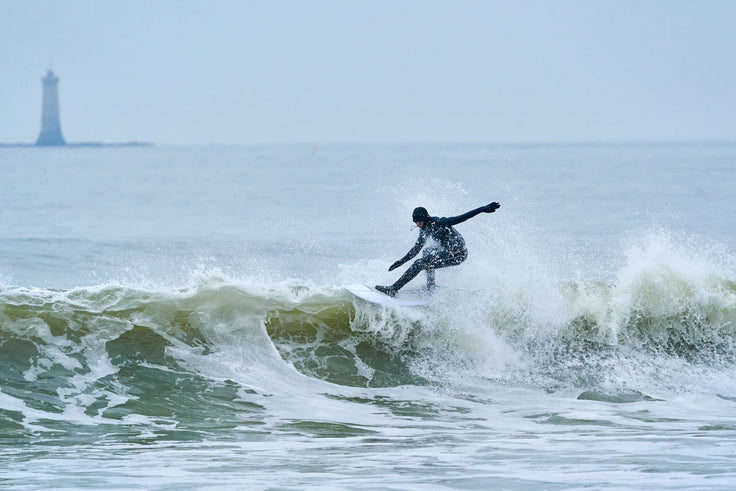Inflate your wing
We'll explain how and to what pressure you should inflate your wing in this tutorial, which includes a video demonstration!
To ensure optimal performance of your wing, it is important to make its inflatable structure sufficiently rigid by pumping the right amount of air in. If your wing bends while riding, it means it’s under-inflated.
But be careful — to prevent the wing from bending, the solution is not to inflate your wing to the maximum pressure. Firstly, it's simply not necessary, and secondly, it puts unnecessary strain on materials not designed for excessively high pressures. Following the guidelines in the video below is important to easily avoid any unpleasant surprises during your session.

Wing foiler : Jules, GONG staff, in Plus Perf Series with a HIPE Perf and an X-Over foil.
Recommended Pressures in Wing Foiling
The recommended pressures listed in the "Buying Guide" section of your wing depend on the model, its construction, and especially its size. You don’t inflate a 3m² wing to the same pressure as a 7m² wing, nor do you inflate a kite to the same pressure as a wing (as explained in this article).
Please note, we do not recommend using a pressure gauge for the reasons detailed below.
This video shows you a reliable method that works for all wings and allows you to use a pump that has no gauge.
How to Inflate Your Wing:
Using a Gauge
Recommended pressures are listed for our wings. However, we do not recommend using a gauge to inflate your wing for several reasons:
- The reliability of the gauge is inconsistent on most pumps available on the market.
- The reliability of the gauge is not guaranteed on a quality pump, as the airtightness of the hose can quickly deteriorate when its tip is sanded down.
- The inflation valve has a check valve that does not allow pressure reading without further inflating the wing. Additionally, the gauge needle moves rapidly, making it difficult to read the pressure accurately.
- How you connect your pump to your wing also influences the reading. For example, if the bayonet of the hose is not correctly connected (not locked with a quarter turn), there can be a pressure difference of 3 PSI compared to a properly locked bayonet.
Take several pumps with gauges to the beach and have a test; you may be surprised by the variations from one pump to another. And note that a 2 PSI difference is already significant for your wing’s pressure. The same goes for electric pumps, which often display 2 PSI more than the gauges on manual pumps. Unlike you, the electric pump will not stop when the wing is clearly visibly inflated enough.
Furthermore, as explained earlier, the ideal pressure is specific to each wing. Referring to a PSI measurement on a gauge could cause confusion during a session, such as inflating your 6m² wing to the usual pressure of your 4m² wing.
On a kite, things are different because the surface tensions are much lower at the same pressure, which implies greater margins. Also, diameter variations are less significant from one size to another. That’s why our pumps’ gauges do not indicate a pressure range for wings.









